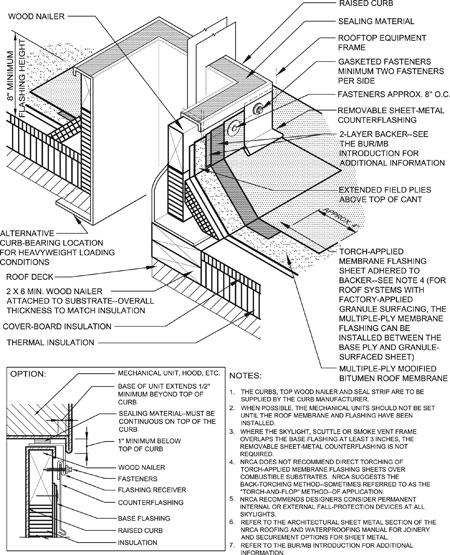If you use The NRCA Roofing Manual: Mem brane Roof Systems—2007, you should note that NRCA has reformatted its construction details pertaining to curb design. The manual's previous edition, The NRCA Roofing and Waterproofing Manual, Fifth Edition, provided details for the following curb conditions:
In the 2007 edition, NRCA addresses these details by curb type rather than penetration type. The curb construction details now are referred to as:

Detail MB-14A from The NRCA Roofing Manual: Membrane Roof Systems—2007
Although the curb construction details' organization has changed, the detailing and notes relating to curb design remain largely the same. Using MB-14A, "Prefabricated Metal Curb," as an example, the following design issues haven't changed:
However, there are two new notes in the footnote sections of the curb construction details that address safety concerns. In the built-up and modified bitumen torch-applied details, NRCA has added: "NRCA does not recommend direct torching of torch-applied membrane flashing sheets over combustible substrates. NRCA suggests the back-torching method—sometimes referred to as the torch-and-flop method—of application."
In all the curb details, NRCA has added, "NRCA recommends that designers consider permanent internal or external fall-protection devices at all skylights."
Joan P. Crowe, AIA, is an NRCA director of technical services.
COMMENTS
Be the first to comment. Please log in to leave a comment.